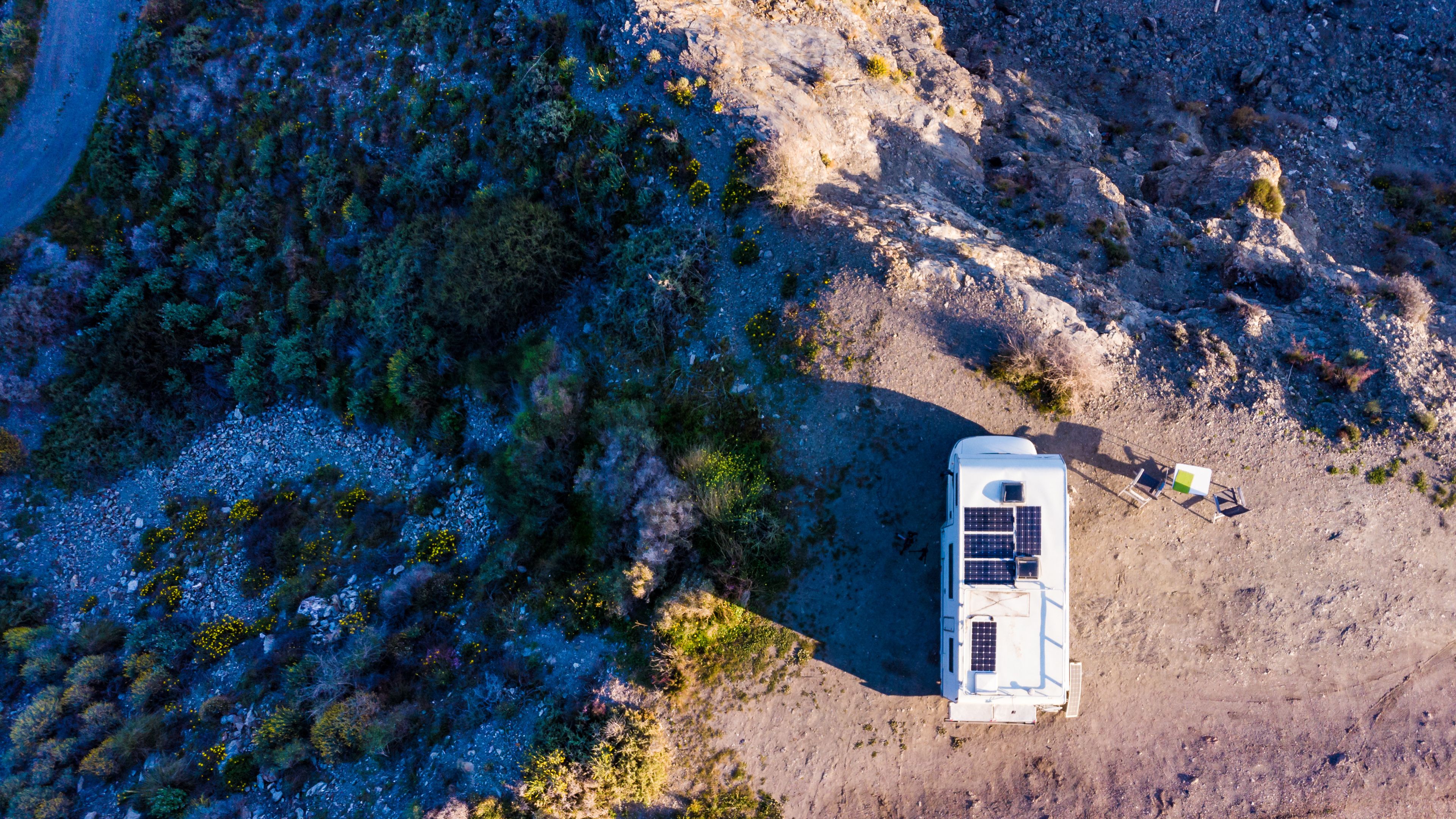Sustainability is playing an increasingly important role in our lives. While this trend has been around for a long time in many areas of life, it is still new in the camping industry. So that you can start your camping holiday emission-free, we now also have e-campers in our range!
In this article you will learn everything about e-camping, and we also give you 10 important tips on how to make your e-camping experience even more sustainable.
What is e-camping?
E-camping is new, environmentally friendly and emission-free. With the Pössl E-Vanster you get 100% electric power - that's e-camping!
Innovative
Electronic vehicles and camping? A perfect combination! You have all the advantages of a normal camping trip, but are more environmentally friendly on the road. The e-revolution in camping starts now!
Benefits e-camping
- Emission-free on the road
- Great driving experience
- Sustainable camping with full comfort
Our E-Camper: The Pössl E-Vanster
How does our E-Camper work?
Instead of a petrol or diesel engine, our e-camper is powered by an electric motor. For this motor to work, it needs a battery (also called accumulator), so you don't have to fill up with petrol or diesel, thus avoiding CO2 emissions and also driving more economically. When you hand over your E-Camper, it is at least 80% charged.
Structure of our e-camper
In contrast to a combustion engine, an electric camper has a simpler design. Many components of a classic combustion model are not needed in an e-camper.
The motor, power electronics, cooling systems and battery are located inside the electric camper. Simple yet effective - that's our E-Camper!
Camping with the Pössl E-Vanster
The Pössl E-Vanster offers full comfort for both sleeping and cooking. It is also equipped with a fresh and waste water tank, as well as a gas supply.
In the Pössl E-Vanster you will always have a restful night's sleep. In our E-Camper you will find two sleeping areas. A double bed in the pop-up roof with panoramic window and a lounge bed on the fold-down rear bench.
With our electric camper, you can cook any meal even when travelling. An integrated kitchen box incl. 2-burner cooker, sink and a cool box make sure of that. The kitchen box is extendable, so you can even cook outdoors. The E-Camper is also equipped with our basic kitchen kit. This includes kitchen utensils for 4 travellers, such as plates, cutlery, knives, pots and much more. For absolute gourmets, we offer the Premium kitchen package for a small surcharge.
E-camping: 10 tips for sustainable camping with an e-camper
With our electric camper, you'll be more sustainable from the start. But there are other things you can do to make your camping experience more environmentally friendly. Here are 10 tips for sustainable camping with the e-camper:
Environmentally friendly driving
Drive at low revs and smoothly. You should not constantly accelerate or brake. The cruise control in our E-Camper helps you with this. In traffic jams, it is advisable to switch off the engine completely. You can also switch to a bicycle for shorter trips during your camping adventure - this way you protect the environment and keep fit at the same time.
Light luggage
A low weight also reduces the camper's power consumption. So take only what you need on your trip. Fill your fresh water tank only minimally before departure, you can then fill it up completely at the campsite. Don't take too much food and clothing. Buy food and toiletries locally.
Save water
Save on your fresh water. Collect the dishes and wash them only once a day. It is best to use a large washing-up bowl. Shower sparingly and don't let the water run too long. Also make sure to dispose of grey and black water properly.
Sustainable campsites
There is now a wide range of sustainable campsites. You can recognise many of these campsites by the "Ecocamping" certificate. They are characterised by nature and environmental protection as well as the saving of resources. You'll also find charging stations at many of these campsites.
Sustainable tableware
To reduce your waste, choose reusable products. Take stainless steel or bamboo plates and cutlery instead of buying disposable plates and cutlery. Use stainless steel bottles instead of plastic bottles. You can also save weight by using wood instead of ceramic, so you can avoid extra kilos.
Use air conditioner rarely
Air conditioners are energy guzzlers if they are set too cold. So use your air conditioner only rarely. Try to cool your camper naturally by airing it in the morning and evening, standing in the shade and darkening it during the day.
Correct waste disposal
In general, you should try to create as little rubbish as possible, especially when camping. The waste that cannot be avoided should be separated and disposed of properly. You can separate it into residual waste, paper waste, organic waste, plastic waste and glass and dispose of it in the bins provided at the campsites. You can dispose of other rubbish that does not belong in the rubbish bin at the recycling centre nearby. Many supermarkets have collection points for empty batteries.
Sustainable hygiene products
Make sure to use chemical-free and biodegradable hygiene products. Pollutants from soap and shampoo get into the groundwater through the sewage pipes on the campsite and thus also into the environment. You can also use sustainable products for dental care.
Use solar energy
Instead of charging your electronic devices with electricity from the socket, you should (if possible) use a mobile solar system. You can save money and produce your electricity in an environmentally friendly way at any time and place.
Respect for nature
Leave your pitch as you found it. Pick up your rubbish and set a good example. Others will follow your example.
With these tips, nothing stands in the way of a sustainable camping trip.
We wish you lots of fun camping,
Your FreewayCamper-Team
